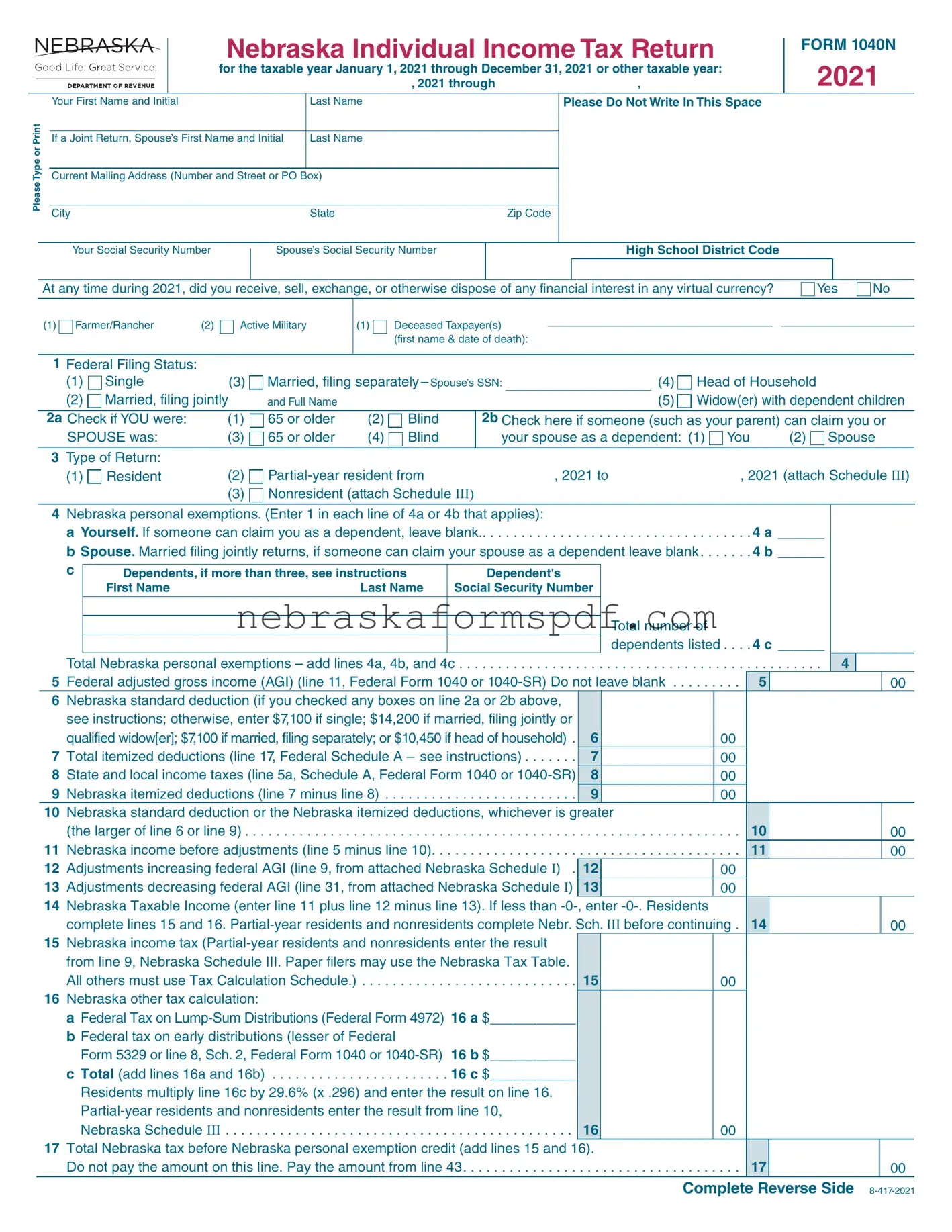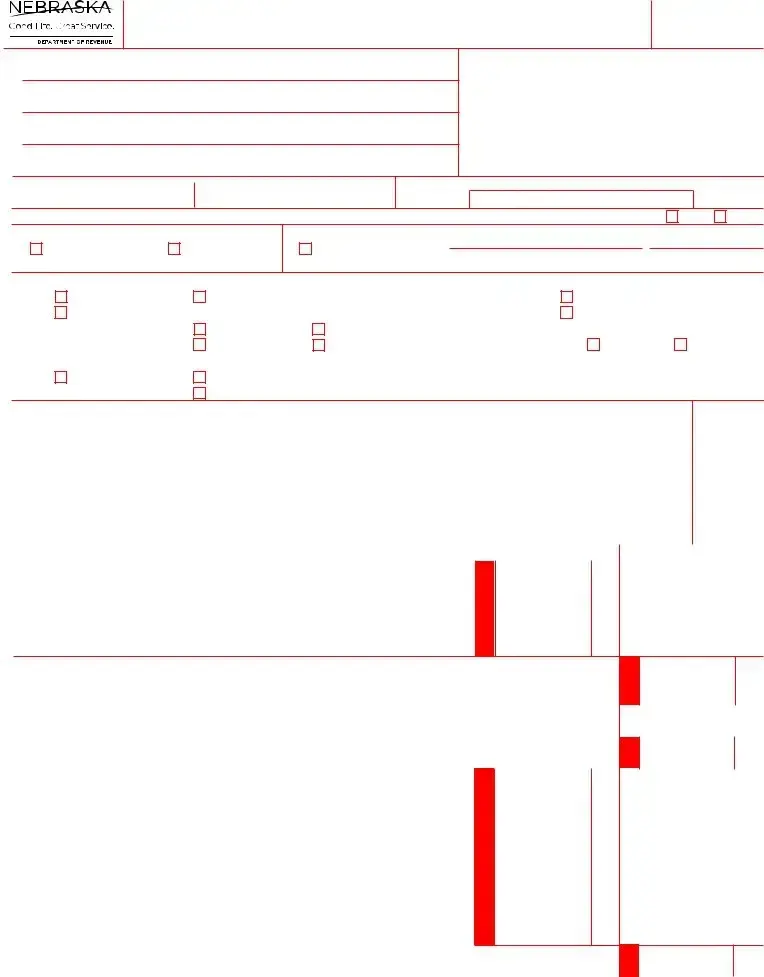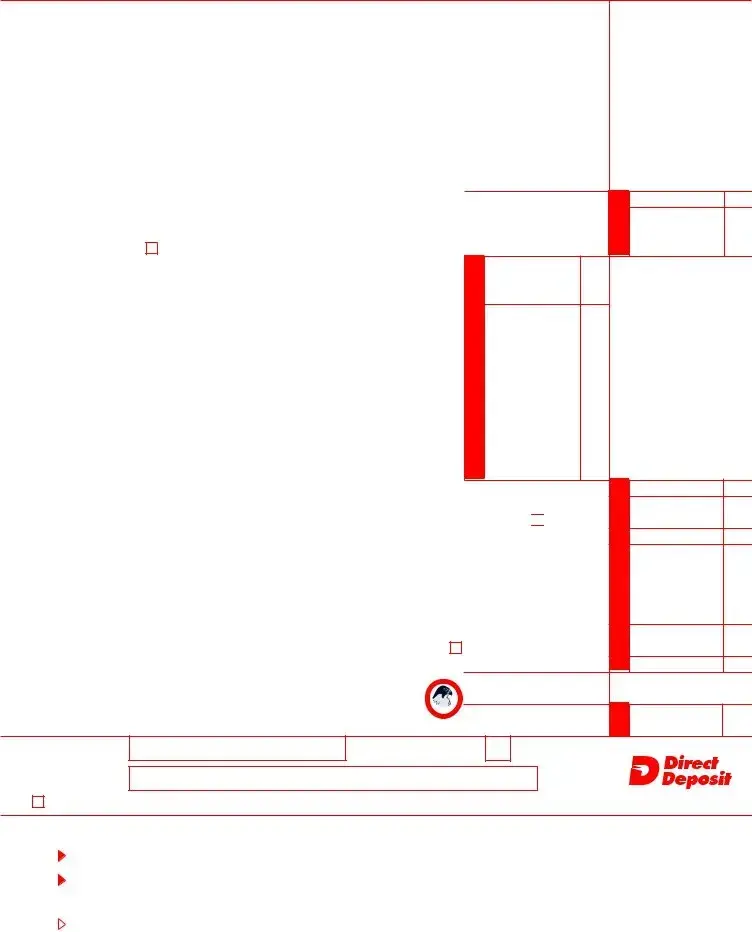The Nebraska 1040N form is the state income tax return form for residents of Nebraska. It is used to report annual income and calculate the state income tax owed for the year. The form covers the taxable year from January 1, 2020, through December 31, 2020, or for any other taxable year specified by the taxpayer.
Any resident, partial-year resident, or nonresident who has received income from Nebraska sources during the taxable year must file the Nebraska 1040N form. This includes individuals who work in Nebraska, own property in the state, or have other income-generating activities within Nebraska.
Your filing status on the Nebraska 1040N form should match your federal filing status. The options include single, married filing jointly, married filing separately, head of household, and widow(er) with dependent child. Your filing status affects your standard deduction and tax rate.
The Nebraska 1040N form must be filed by April 15th following the end of the tax year. If the due date falls on a weekend or holiday, the deadline is extended to the next business day. Taxpayers who need more time can request an extension, which grants additional time to file but not to pay any taxes owed.
Exemptions can be claimed for yourself, your spouse (if filing jointly), and any dependents. Each exemption reduces your taxable income. If you or your spouse can be claimed as a dependent on someone else's return, you should not claim the personal exemption for yourself or your spouse.
-
Single: $7,000
-
Married filing jointly or qualified widow(er): $14,000
-
Married filing separately: $7,000
-
Head of Household: $10,300
Note: These amounts are adjusted for taxpayers who are 65 or older or blind.
Your taxable income is calculated by taking your federal adjusted gross income, applying the Nebraska standard or itemized deductions, and then subtracting any allowances for exemptions. Specific adjustments specific to Nebraska may also need to be considered.
If you are requesting a refund, mail your completed form to the Nebraska Department of Revenue, PO Box 98912, Lincoln, NE 68509-8912. If you are not requesting a refund, send it to PO Box 98934, Lincoln, NE 68509-8934. Remember to keep a copy of the return for your records.




 . . . . . . . .
. . . . . . . .  use only
use only